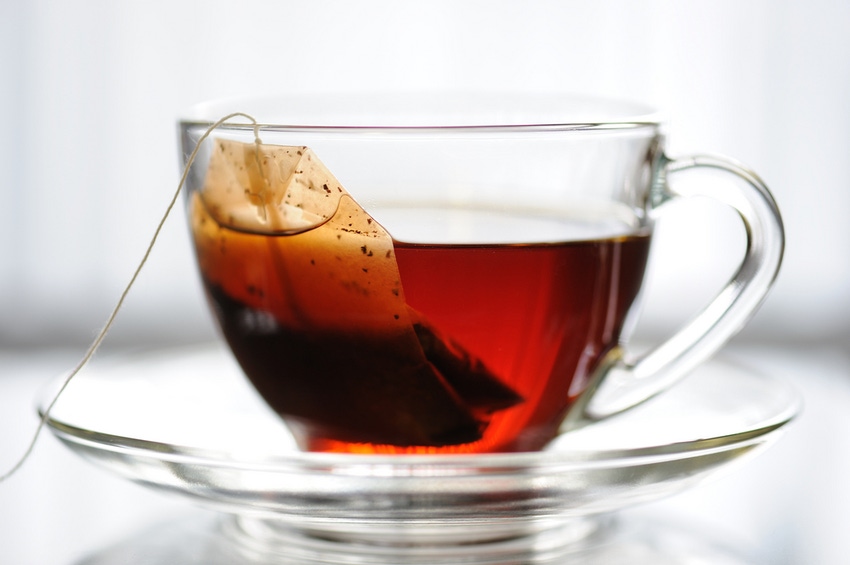HerbalGram cover article addresses impacts of environmental variation on botanical quality and activity.
September 15, 2014

The chemistry, taste, and health effects of tea can vary with changes in climate, says a new article published by the nonprofit American Botanical Council (ABC). Recent research by Selena Ahmed, PhD, on climate change and its effects on the phytochemical compounds in tea (Camellia sinensis) is part of an extensive study conducted by Dr. Ahmed in the Yunnan province of southwestern China and has implications for the future of medicinal botanicals. Dr. Ahmed’s report on her groundbreaking research is the cover article for the current issue (#103) of HerbalGram, ABC’s peer-reviewed, quarterly scientific journal.
Dr. Ahmed has worked in the Yunnan province for eight years, studying how weather pattern variations impact the naturally occurring phytochemicals and beneficial health properties of tea. Her forthcoming research will investigate how the effects of climate change could alter the benefits of other medicinal plants.
Chinese tea farmers have a finely attuned sense of how differing weather patterns affect the taste and quality of their crop: In the dry seasons, the tea leaves are more potent; in the wetter monsoon seasons, the leaves have a gentler taste and aroma. “The majority of tea farmers I have interviewed state that climate patterns have shifted noticeably over their lifetimes; such observed changes include warmer temperatures, greater unpredictability of weather such as increased variation of rains, and changing phenology of plants (i.e., the effect of weather patterns on plant growth cycles, including flowering and fruiting seasons, etc.), including earlier bud burst,” wrote Dr. Ahmed. The idea that weather patterns could noticeably change the taste, and thus the quality, of crops and influence the livelihoods of the farmers prompted her to analyze samples of tea from successive growing seasons to ascertain what differences are present on a chemical level.
“Tea is the world’s most widely consumed beverage, after water,” said HerbalGram Editor-in-Chief Mark Blumenthal. “A vast body of scientific and medical research in the past several decades shows many strong correlations between tea, particularly green tea, and abundant health benefits. Dr. Ahmed’s research has compelling implications not only for tea, but for other food and medicinal plant crops, for which changes in climate can cause alterations in taste, and, accordingly, the plants’ nutritional and medicinal values.”
Dr. Ahmed writes about her tea research and connects the phenomenon in China with tea growers in other regions, including Sri Lanka, Hawaii, and Japan. In collaboration with researchers from Tufts University and the University of Florida, she studies the chemistry behind the shift in functional quality and secondary metabolites in the tea plant. Plants produce secondary metabolites as a defense mechanism in response to environmental stressors, and a high concentration of these metabolites often correlates to higher nutritional and therapeutic benefits for the consumer.
Through laboratory studies of extracts made from tea samples collected from the Chinese farms, Dr. Ahmed discovered that tea’s key health compounds (called catechins) can decrease by almost 50% when the leaves are harvested after the monsoon season as compared with leaves harvested after a drought. This is consistent with anecdotal observations concerning changes in tea flavor noted by the farmers she interviewed; the differences in flavor correspond with her analyses of the plants’ overall chemistry, including the catechins.
Dr. Ahmed is an assistant professor of Sustainable Food Systems at Montana State University. She previously wrote another cover article for HerbalGram, “Pu-erh Tea and the Southwest Silk Road: An Ancient Quest for Well-being,” featured in issue #90 in 2011, in which she described the cultural significance and medicinal use of pu-erh tea in Tibet. (Pu-erh is a highly valued and relatively high-cost variety of Chinese tea.) She also has co-authored The Tea Horse Road: China’s Ancient Trade Road to Tibet (River Books Co. Ltd.; 2011) with photographer Michael Freeman about the pu-erh trade and the merchants who traveled the fabled ancient trade route to exchange tea and other goods between China and Tibet. Mary Lou Heiss reviewed the book in issue #94 of HerbalGram.

You May Also Like


